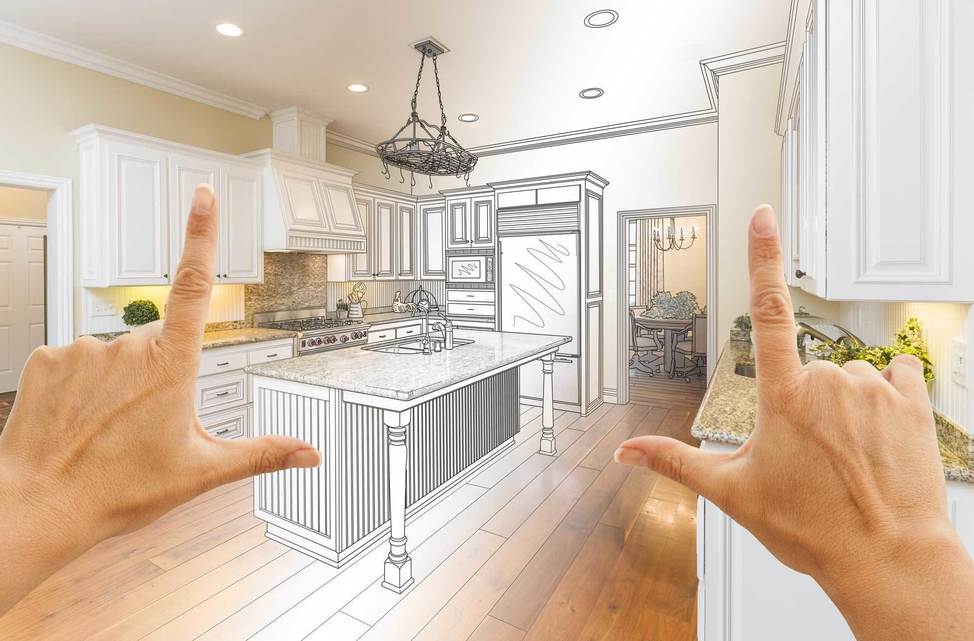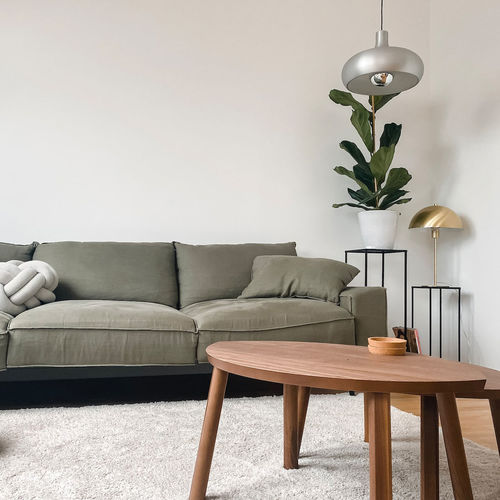Ever wondered why some houses fly off the market while others sit for months? It's not just luck or location - it's psychology. Yep, you heard that right. The human brain, with all its quirks and biases, plays a huge role in home-buying decisions. This article dives into the nitty-gritty of buyer psychology, showing you how to use it to your advantage when selling your home. We'll explore how pricing tricks can make your property irresistible, and why the condition of your home might be sending subliminal messages to potential buyers. You'll learn how to stage your house to tug at heartstrings and open wallets. By the time you're done reading, you'll have a toolbox full of sneaky (but ethical) tactics to make your home the belle of the real estate ball. So, are you ready to get inside the heads of home buyers and sell your house faster than you can say "sold"?
Mastering First Impressions
The human brain processes visual information at lightning speed, making snap judgments within 7-10 seconds of seeing a property. A shabby mailbox or peeling paint can send potential buyers running before they even reach your front door. The psychological impact runs deep – buyers often decide if they love or hate a house based on that crucial initial moment.
Maximizing Visual Impact
Your front yard serves as the red carpet to your home's grand entrance. Fresh mulch around mature trees creates depth and definition, while strategic lighting highlights architectural features even during evening showings. Replace worn house numbers with modern, easy-to-read alternatives that complement your home's style. Power washing the driveway and walkways removes years of accumulated grime, instantly brightening the approach to your home. Seasonal flowers planted in copper or terra cotta containers add pops of color without requiring extensive gardening knowledge.
The entry point demands special attention. A freshly painted front door in a bold yet tasteful shade makes a confident statement. Clean windows sparkle and reflect natural light, while polished hardware on the door handle and knocker adds sophisticated touches that buyers notice subconsciously. Symmetrical potted plants flanking the entrance create balance and harmony that appeal to our innate desire for order.
Engaging the Senses
The sensory experience extends beyond visual appeal. "Subtle fragrances can evoke positive memories" and emotional connections when buyers step inside. Skip artificial air fresheners in favor of natural scents – fresh-baked cookies, brewing coffee, or simmering cinnamon sticks create an authentic, homey atmosphere. Open windows before showings to let fresh air circulate through each room.
Background sounds play a crucial role in setting the mood. Soft instrumental music at low volume helps mask street noise while creating a peaceful ambiance. The gentle trickle of a tabletop fountain can transform a ordinary space into a zen retreat. Strategic placement of plush rugs and textured throws invites touch, making rooms feel more luxurious and lived-in.
Placing fresh flowers or bowls of seasonal fruit in key areas stimulates multiple senses simultaneously. The natural colors please the eye while subtle fragrances work their magic on the nose. Small details like perfectly plumped pillows and artfully draped throws create an environment that feels both sophisticated and welcoming.
Strategic Pricing Techniques
Numbers trigger powerful psychological responses in home buyers' minds. The difference between listing at $500,000 versus $499,900 might seem trivial, but research shows these small adjustments significantly impact buyer perception and behavior. "Pricing real estate is its own beast to tame," requiring careful consideration of human psychology alongside market data.
The Magic of Charm Pricing
Setting prices just below round numbers taps into deep-seated buying patterns. When buyers see $299,900 instead of $300,000, their brains process it as substantially less expensive, even though the actual difference is minimal. This technique works particularly well in competitive markets where buyers actively compare multiple properties.
Anchoring Effects
Starting with a slightly higher initial price creates a reference point in buyers' minds. When the price drops even marginally, it appears more attractive simply because it's lower than the original figure. This psychological principle makes subsequent offers feel like better deals, regardless of the actual market value.
The key lies in strategic positioning within your local market segment. A property listed at $425,000 might attract more attention than one at $427,000, despite the negligible difference. Smart sellers analyze neighborhood sales patterns to identify these sweet spots where psychology meets market reality.
Timing also plays a crucial role in psychological pricing. Properties introduced to the market on Thursdays or Fridays often generate more weekend viewings, creating a sense of competition among potential buyers. This manufactured urgency combines with strategic pricing to motivate faster decisions.
Setting base prices requires balancing multiple factors – recent comparable sales, current market conditions, and seasonal trends. However, the final asking price should incorporate psychological elements that make your property stand out. Buyers scanning listing prices will pause longer on numbers that break conventional patterns, giving your home extra attention in crowded markets.
Testing different price points through market feedback helps refine your strategy. Monitoring showing requests and online listing views provides valuable data about buyer responses to various price levels. This information guides adjustments that maximize buyer interest while maintaining profitable margins.
Staging for Emotional Connection
Buyers make purchase decisions with their hearts, not just their wallets. A strategically staged home "speaks to buyers on an emotional level," turning casual browsers into serious bidders. The National Association of Realtors confirms that key living spaces significantly influence buyer perception, making proper staging a crucial factor in securing faster sales at better prices.
Smart furniture placement creates natural pathways through each room, letting potential buyers flow effortlessly from space to space. Fresh white bedding, plump cushions, and carefully chosen artwork add layers of comfort without overwhelming the senses. Strategic lighting transforms dark corners into bright, welcoming nooks that make rooms feel expansive and airy.
Here's what makes buyers fall in love with a space:
- Pack away family photos, children's artwork, and personal collections – these items block buyers from mentally moving in
- Replace bold patterns with solid-colored furnishings in warm grays, soft blues, and gentle earth tones
- Remove excess furniture, keeping only pieces that showcase each room's purpose
- Store small appliances, toiletries, and daily items to maximize counter space
- Add subtle touches like fresh flowers or a bowl of green apples for pops of natural color
Organizing closets and storage areas demonstrates the home's practical features. Neatly folded towels and organized pantry shelves show off built-in storage solutions. Clean windows let natural light pour in, while strategic mirror placement bounces light around rooms. Simple window treatments frame views without blocking precious daylight.
Making calculated adjustments to furniture layout opens up traffic flow and highlights architectural features. A thoughtfully positioned sofa draws attention to a beautiful fireplace. Moving the dining table away from walls creates an impression of spaciousness. These subtle changes transform ordinary rooms into compelling spaces that prompt buyers to linger longer.
Leveraging Buyer Emotions
Psychological triggers shape property purchase decisions more than financial calculations. "Home buying FOMO is aggressively returning" in real estate markets, creating powerful opportunities for sellers who understand these dynamics. Smart marketing strategies tap into these natural human responses, motivating potential buyers to take action.
The Power of Perceived Scarcity
When buyers believe a property might slip through their fingers, their decision-making shifts into high gear. Limited viewing slots for open houses create an atmosphere of competition. Scheduling back-to-back viewings amplifies this effect, as buyers notice other interested parties exploring the same space. "Buyers feel pressured to act quickly", especially when they spot multiple cars parked outside during showings.
Creating Time-Sensitive Opportunities
Strategic deadlines generate momentum in the sales process. Announcing a specific offer review date focuses buyer attention and encourages stronger initial bids. Pre-listing buzz through neighborhood mailers or local social media groups builds anticipation before the property hits the market. This manufactured urgency combines with genuine market pressures to accelerate decisions.
The most effective limited-time scenarios feel authentic rather than artificial. A seller's need to close by a specific date for job relocation provides genuine motivation. Seasonal advantages, like being moved in before the school year starts, resonate with family buyers. These real-world constraints give buyers legitimate reasons to expedite their decision-making.
"Social proof bias" plays a crucial role when buyers evaluate properties. Highlighting multiple scheduled viewings or mentioning serious interest from other qualified buyers validates the home's desirability. When potential purchasers witness others admiring special features or discussing renovation possibilities, it reinforces positive impressions and spurs faster action.
Connecting buyers emotionally to specific property features overcomes common hesitations. A cozy window seat perfect for morning coffee creates a personal connection. The way afternoon light streams through kitchen windows paints a picture of daily life. These small but meaningful touches help buyers envision their future in the space, moving them from logical analysis to emotional investment.
Targeted marketing messages emphasize unique property attributes that match buyer aspirations. The finished basement's potential as a home office speaks to remote workers. A fenced yard appeals to pet owners, while proximity to top schools attracts young families. These personalized selling points forge stronger emotional bonds, making buyers more likely to act decisively when opportunity knocks.
Building Trust and Reducing Buyer Regret
Recent data shows that 77% of homebuyers prioritize trust in real estate transactions, yet many sellers overlook this crucial factor. Getting ahead of potential concerns through detailed documentation and upfront information creates a foundation of openness that buyers crave. Professional home inspections, complete repair records, and utility bill histories give buyers the confidence to make informed decisions.
Transparency and Trust
Pre-listing inspections catch issues before they become deal-breakers. Smart sellers hire certified inspectors to examine everything from foundation to roof, then document findings in detailed reports. Providing maintenance records, warranties, and improvement permits shows buyers you have nothing to hide. Recent surveys reveal that only 21% of prospects highly trust sellers, making documentation a powerful differentiator.
Detailed disclosure packets should include:
- Recent major repairs and upgrades with receipts
- Known issues requiring future attention
- Age of key systems like HVAC and roof
- Property tax history and HOA documents
- Environmental reports if applicable
Addressing Affordability
Flexible payment structures help overcome financial hurdles. Offering lease-to-own options or seller financing opens doors for qualified buyers who need alternative paths to ownership. Consider covering closing costs or providing credits for immediate repairs to ease the initial financial burden.
Creative solutions might include:
- Down payment assistance programs
- Closing cost credits
- Short-term lease options
- Renovation allowances
- Flexible closing timelines
Providing detailed cost breakdowns helps buyers understand the true financial picture. Monthly utility averages, maintenance estimates, and tax information let buyers budget accurately. Some sellers include home warranty packages to protect buyers from unexpected repairs in the first year.
Proactive communication about property conditions builds genuine relationships with potential buyers. When sellers share information freely, buyers feel more secure making substantial financial commitments. 78% of recent homebuyers felt stressed or regretful about their purchases, highlighting how crucial transparency becomes in preventing buyer remorse.
Final Thoughts
Selling your home isn't just about putting up a "For Sale" sign and hoping for the best. The psychology behind home buying shows us that buyers make decisions based on both logic and emotion. Smart pricing strategies, proper home staging, and understanding what makes buyers tick can turn your home from "just another listing" into "the one."
Think of it this way - when you know what buyers want, you can give it to them. Clean spaces, well-lit rooms, and strategic furniture placement do more than make your home look good. They help buyers picture themselves living there. The right price point creates urgency, while careful staging builds emotional connections.
These psychological insights work because they tap into how people actually make buying decisions. When you apply them, you're not just selling a house - you're selling someone their next home. Your preparation efforts will likely lead to faster sales and better offers.
Ready to put these ideas to work? Start with one room. Clean it up, move furniture around, and see how different it feels. Then tackle the next space. Small changes add up to big results. Remember - buyers aren't just looking at your house, they're imagining their future in it. Make it easy for them to say yes.
The more you understand buyer psychology, the better equipped you'll be to present your home in its best light. Take action now, and watch how these insights transform your home-selling experience.




